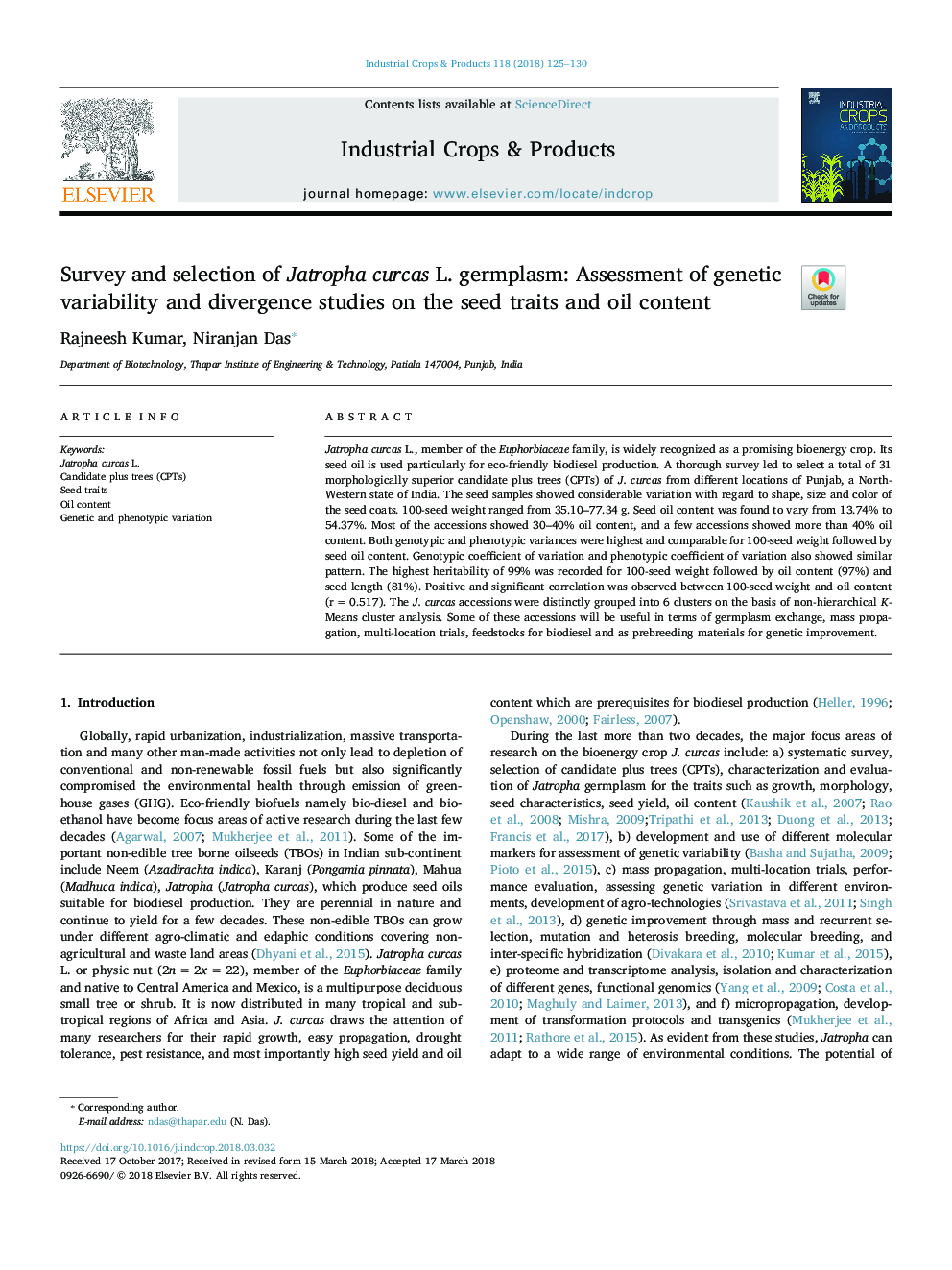| Article ID | Journal | Published Year | Pages | File Type |
|---|---|---|---|---|
| 8880097 | Industrial Crops and Products | 2018 | 6 Pages |
Abstract
Jatropha curcas L., member of the Euphorbiaceae family, is widely recognized as a promising bioenergy crop. Its seed oil is used particularly for eco-friendly biodiesel production. A thorough survey led to select a total of 31 morphologically superior candidate plus trees (CPTs) of J. curcas from different locations of Punjab, a North-Western state of India. The seed samples showed considerable variation with regard to shape, size and color of the seed coats. 100-seed weight ranged from 35.10-77.34â¯g. Seed oil content was found to vary from 13.74% to 54.37%. Most of the accessions showed 30-40% oil content, and a few accessions showed more than 40% oil content. Both genotypic and phenotypic variances were highest and comparable for 100-seed weight followed by seed oil content. Genotypic coefficient of variation and phenotypic coefficient of variation also showed similar pattern. The highest heritability of 99% was recorded for 100-seed weight followed by oil content (97%) and seed length (81%). Positive and significant correlation was observed between 100-seed weight and oil content (râ¯=â¯0.517). The J. curcas accessions were distinctly grouped into 6 clusters on the basis of non-hierarchical K-Means cluster analysis. Some of these accessions will be useful in terms of germplasm exchange, mass propagation, multi-location trials, feedstocks for biodiesel and as prebreeding materials for genetic improvement.
Related Topics
Life Sciences
Agricultural and Biological Sciences
Agronomy and Crop Science
Authors
Rajneesh Kumar, Niranjan Das,
